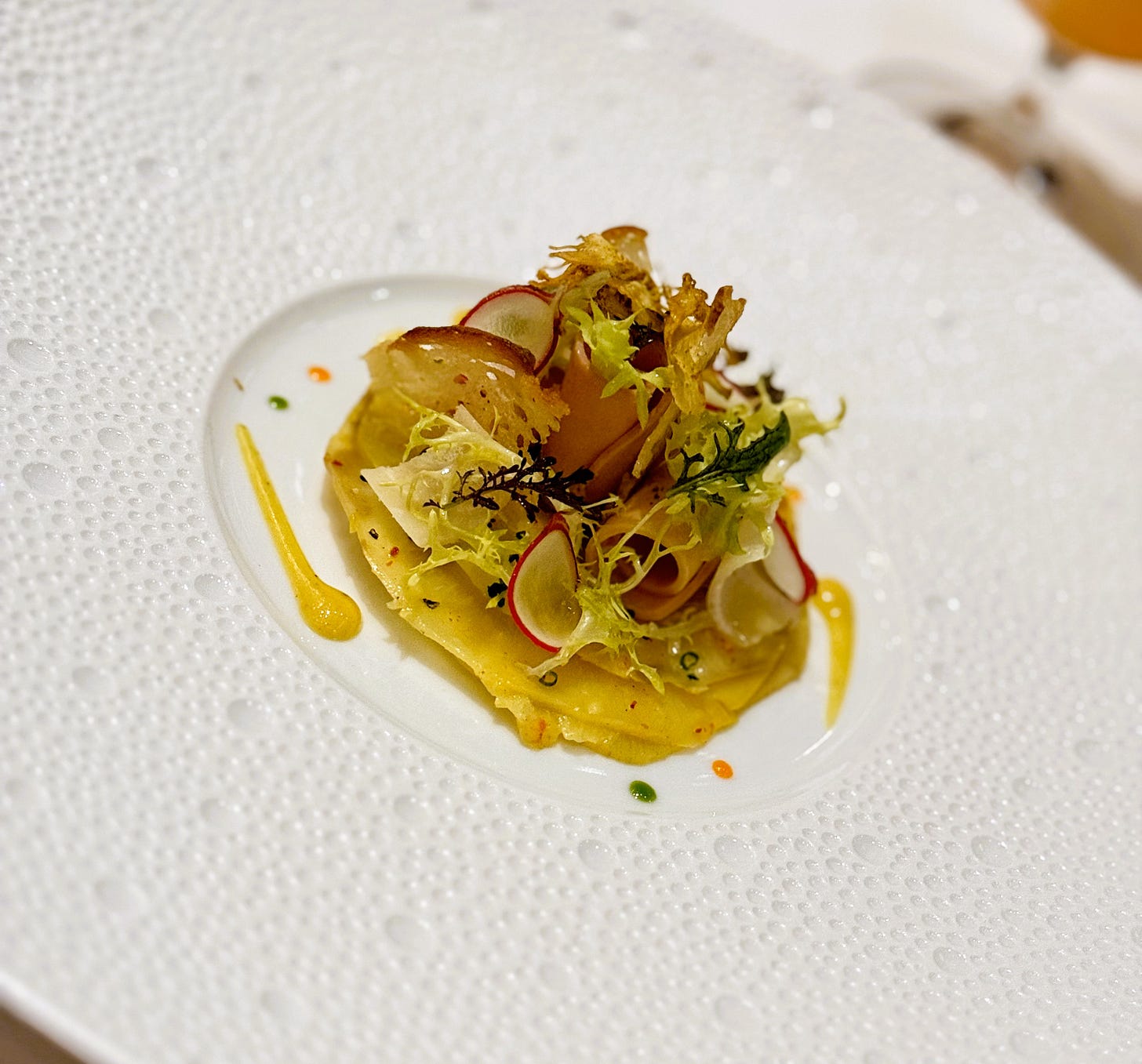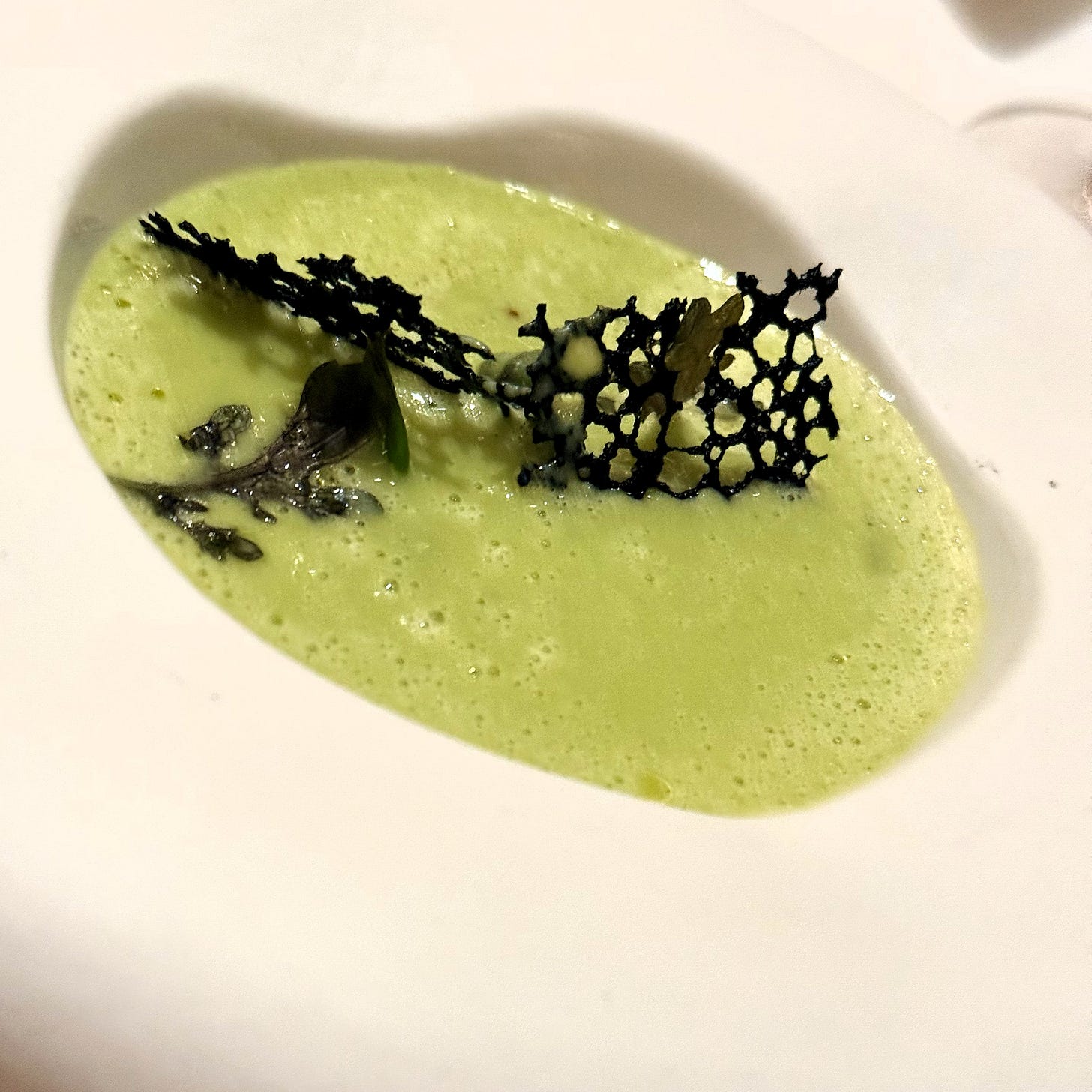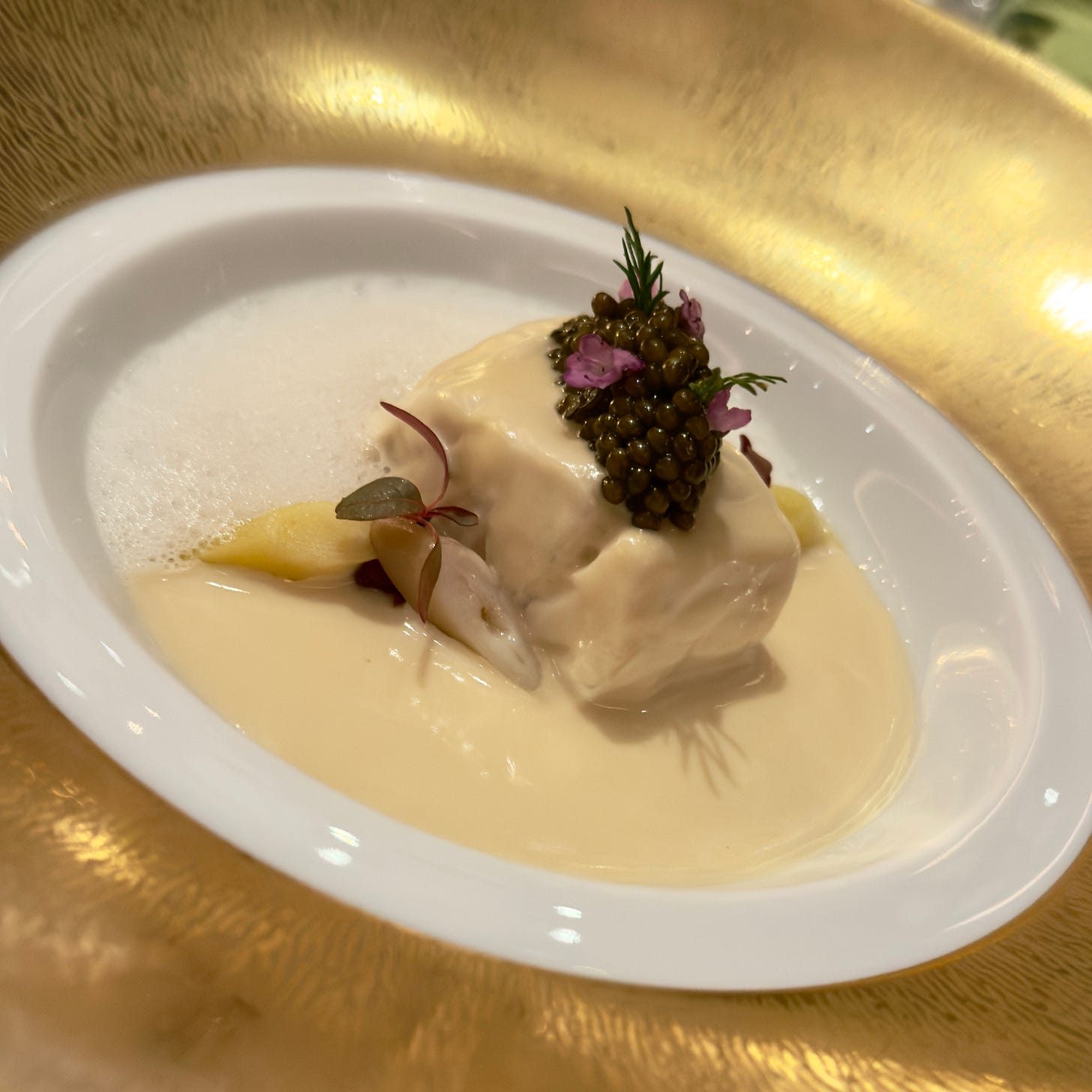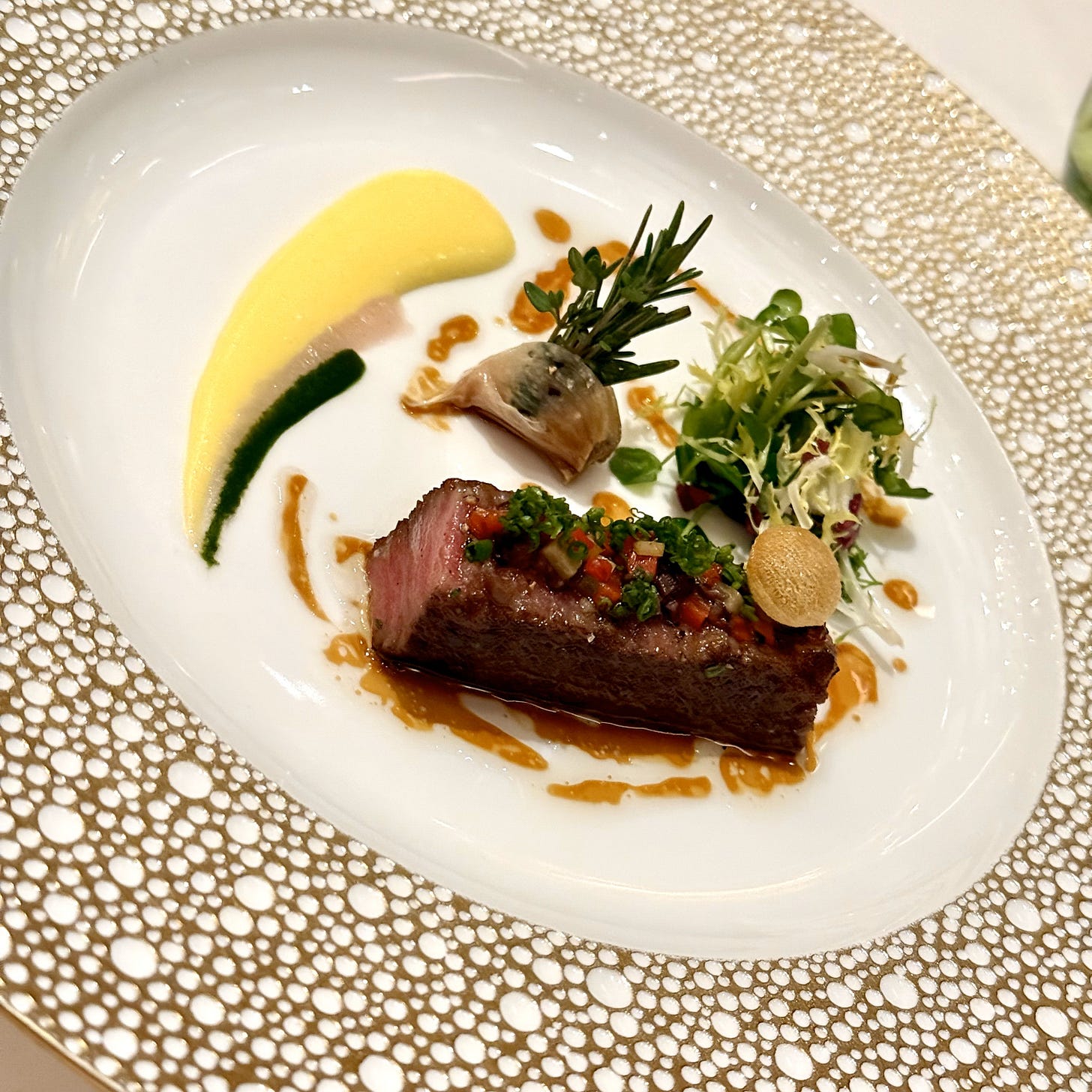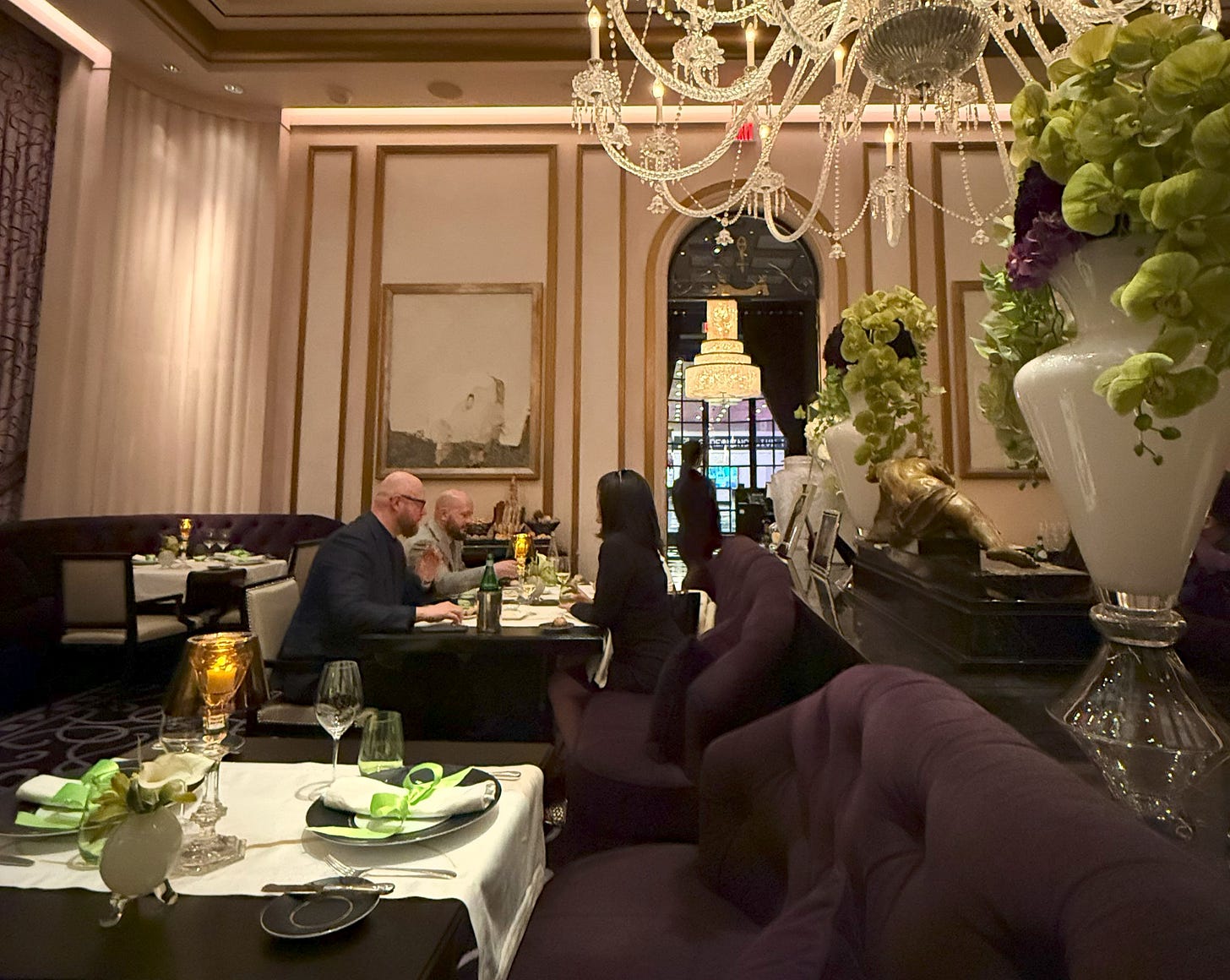Luxury served, legacy questioned
When it comes to dining in Vegas, Robuchon is no secret
Editor’s Note: We continue our preview of dining destinations for the summer. We’re sticking with Las Vegas and the restaurant of the late, great chef Joël Robuchon (DC).
Joël Robuchon Las Vegas opened in 2006 as the crown jewel of MGM Grand. Known for its gilded Art Deco opulence and 13-course tasting menu, it was the master’s American flagship — until his passing in 2018. Seven years later, his legacy and aura still linger. Now, in 2025, the kitchen belongs to executive chef Eleazar Villanueva, a James Beard Award finalist for Best Chef: Southwest.
Dinner here begins at $525 per person — before tax, tip, or a single drop of wine for the “DeGustation” menu. This isn’t just fine dining, it’s ultra-fine dining. No apologies served; virtually sacred service delivered.
But with each course, one question echoed with increasing resonance: is this still Joël Robuchon, or is it becoming Eleazar Villanueva? I came to experience the work of a James Beard semifinalist, yet the name that echoed most was not Villanueva but Joël Robuchon. I’m left to wonder: can Villanueva command the classics while carving his own identity, all within the confines of what many still consider the penultimate fine dining institution? Let’s eat.
Atmosphere

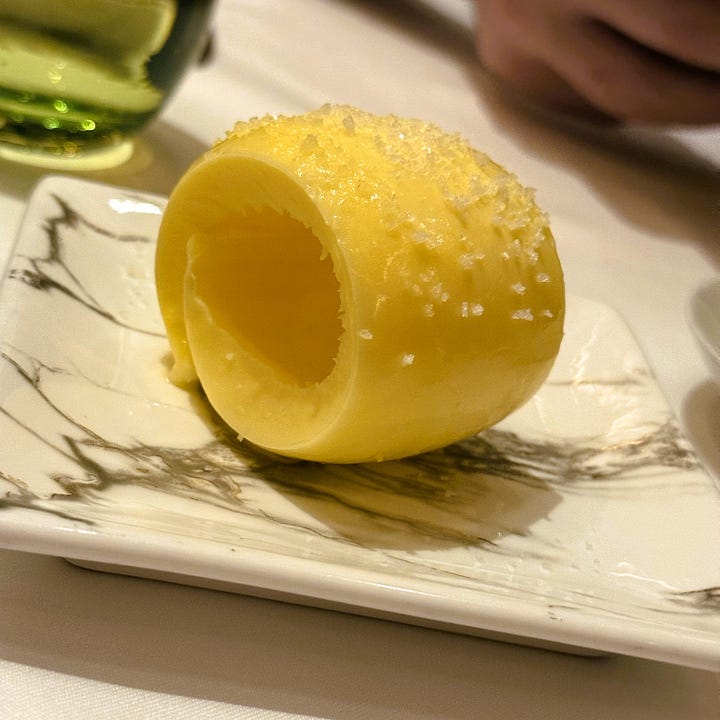
The atmosphere at Joël Robuchon Las Vegas is unapologetically opulent, wrapped in velvet, gold, and a sense of timeless French grandeur. Crystal chandeliers spill light across plush purple seating, with floral centerpieces and sculptural accents that make the dining room feel more like a private salon than a restaurant. A roaring fireplace, marble inlays, and hushed voices complete the effect: this is not just a meal—it’s theatre, ritual, and reverence. Every detail whispers that you’ve entered a space built to impress, to slow down, and to honor the art of fine dining.
Service
Service at Joël Robuchon is the very definition of pièce de résistance—a seamless ballet of elegance, attentiveness, and precision. Our evening began under the expert guidance of Andrew before gracefully transitioning to Angelea, whose poise and perceptiveness elevated each course. Crumbs are whisked away with ceremony, guest preferences are remembered without prompting, and reactions to each bite are quietly observed to tailor the experience in real time. Many on staff have been with Robuchon since the early 2000s, and it shows—not just in the polish, but in the pride and continuity of excellence that permeates every gesture.
Dining
Le Caviar Impérial — with Ossetra atop crab in a crustacean gelée with cauliflower purée
This is the iconic amuse-bouche, one of technical perfection. Flawless in presentation, cylindrical in form, it is sweet, salty, cool, and elegant. The crab dances with the caviar in a way that is toe-curling. The cauliflower purée is cool and smooth, giving balance to the salinity. The gelée was perhaps a bit firm, but this remains a pièce de résistance first course that deserves the hype.
L’Artichaut — foie gras, asparagus, parmesan shavings
A beautifully composed salad. The tangy artichoke and fresh asparagus bring brightness to the rich, buttery, lightly salted foie. It’s a clean and elegant course.
La Noix de Saint-Jacques — yuzu scallop with watermelon radish and buttered radish
The buttered radish was a dream—gentle richness with the warmth of butter. The yuzu bordered on overpowering but held just enough restraint to let the sweetness of the scallop linger. The texture of the scallop was spot-on, and the watermelon radish brought contrast.
L’Asperge Verte — asparagus velouté on scallion jam with ricotta tortellini
This was the first dish to truly shatter expectations. The velouté was silky, sultry, and sensual. It moved with a creaminess and elegance that only French fine dining can deliver. It is now the standard for velouté. The ricotta tortellini were soft and buttery, with delicate richness.
L’Asperge Blanche — white asparagus with black garlic and piment d’Espelette; La Langoustine with foie gras foam
Chef Villanueva doubled down on asparagus and succeeded. The spear was soft and perfectly cooked. The black garlic brought salt and sweet, the piment a subtle heat. Then came the raviolo—a sweet langoustine and rich foie that lingered luxuriously in the mouth. A dish of softness and elegance that left an impression.
Le Bar — champagne beurre blanc, razor clam jus, Petrossian caviar
The sea bass was cooked to a custard-like texture. Initial notes of butter beurre blanc gave way to tangy middle notes from razor clam jus that added clarity and sharpness, and endnotes of salty, briny pops of heaven from the caviar. But—shockingly—I found a fish bone. This has never happened at any fine dining establishment of this caliber I’ve visited.
Le Pigeon — pan-seared squab, beet gastrique, leek fondue
The pigeon was perfectly cooked. The skin had a nice crisp to it, and the meat was tender. The beet and pistachio added a beautiful earthy-nutty tone. However, the leek fondue was crust-heavy, overly salted, and the sauce underneath lacked the necessary finesse to bring this dish together. Each bite felt disjointed with each component feeling like a stand alone bite.
Le Bœuf — Japanese A5 Wagyu, virtual béarnaise, potato purée
The Robuchon potato purée is the standard by which all other purées are judged. Silky, ethereal, and bursting with butter, it remains a masterpiece. The A5 was perfectly cooked, but the topping—reminiscent of a bell pepper and olive tapenade—overwhelmed the delicate flavor of the beef. The acid clashed rather than complemented. It felt like an attempt at modernizing a classic that didn’t land.
La Rhubarbe — rhubarb celebrated four ways
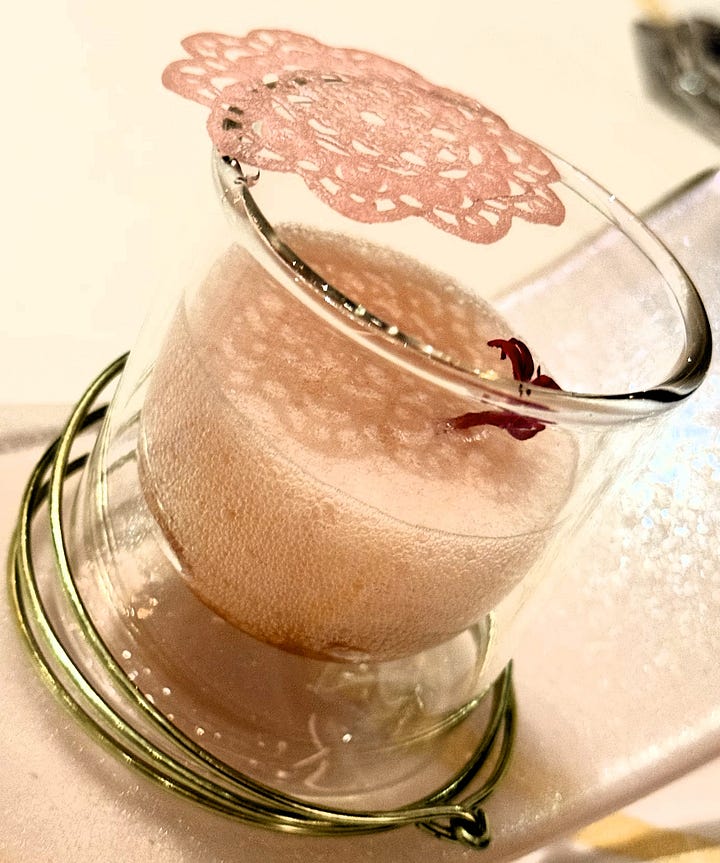

A return to pièce de résistance. A tangy foam danced atop the dish, followed by a sorbet with strong strawberry-like notes. Tiny cubes of rhubarb added texture and sweet-tart bursts. And then—pop rocks. The moment they crackled in my mouth, a smile formed. A dish of joy, precision, and nostalgia, this was one of the most memorable bites of the year.
Le Chocolat — cherry marmalade, chocolate ice cream, Kirsch Chantilly “Black Forest”
Served in a cocoa pod, this dessert was visually striking. Initial notes of delicate chocolate gave way to middle notes of cold vanilla ice cream, and endnotes of cherry. The chocolate flavor profile was delicate. It is a well composed dessert with great technique and flavor. However, it didn’t match the magic of the rhubarb course or the level of flavor of previous courses.
Summary
When you're paying close to $700 after tax and tip for a 12-course meal without alcohol, you are expecting perfection — or something dangerously close to it. A sharp critique is not just warranted, but essential. A fish bone does not necessarily break a meal. But a fish bone in a dish at Joël Robuchon disrupts not just the bite, but shatters any illusion the service had created up to that point.
To be clear, several dishes were the peak of gastronomic refinement — particularly L’Asperge Verte, L’Asperge Blanche, La Rhubarbe, and Le Caviar Impérial. However, the main protein courses that followed the fish, as well as the final dessert, disappointed.
The atmosphere and service unquestionably live up to the restaurant’s legendary status — both elements ultimately outshining the food itself. In leaving Joël Robuchon, my focus was no longer on what is Villanueva and what is Robuchon, but on the cost and cracks in the once-unshakable ethos of the Robuchon mystique.
Atmosphere: 20/20
Service: 20/20
Food: 52/60
Overall: 90/100; Excellent (ultra fine dining)
Final score: 90/100; Excellent
Jared’s Scale
95-100: pièce de résistance.
80-94: Excellent
65-79: Above Average
35-64: Average
20-34: Below Average









